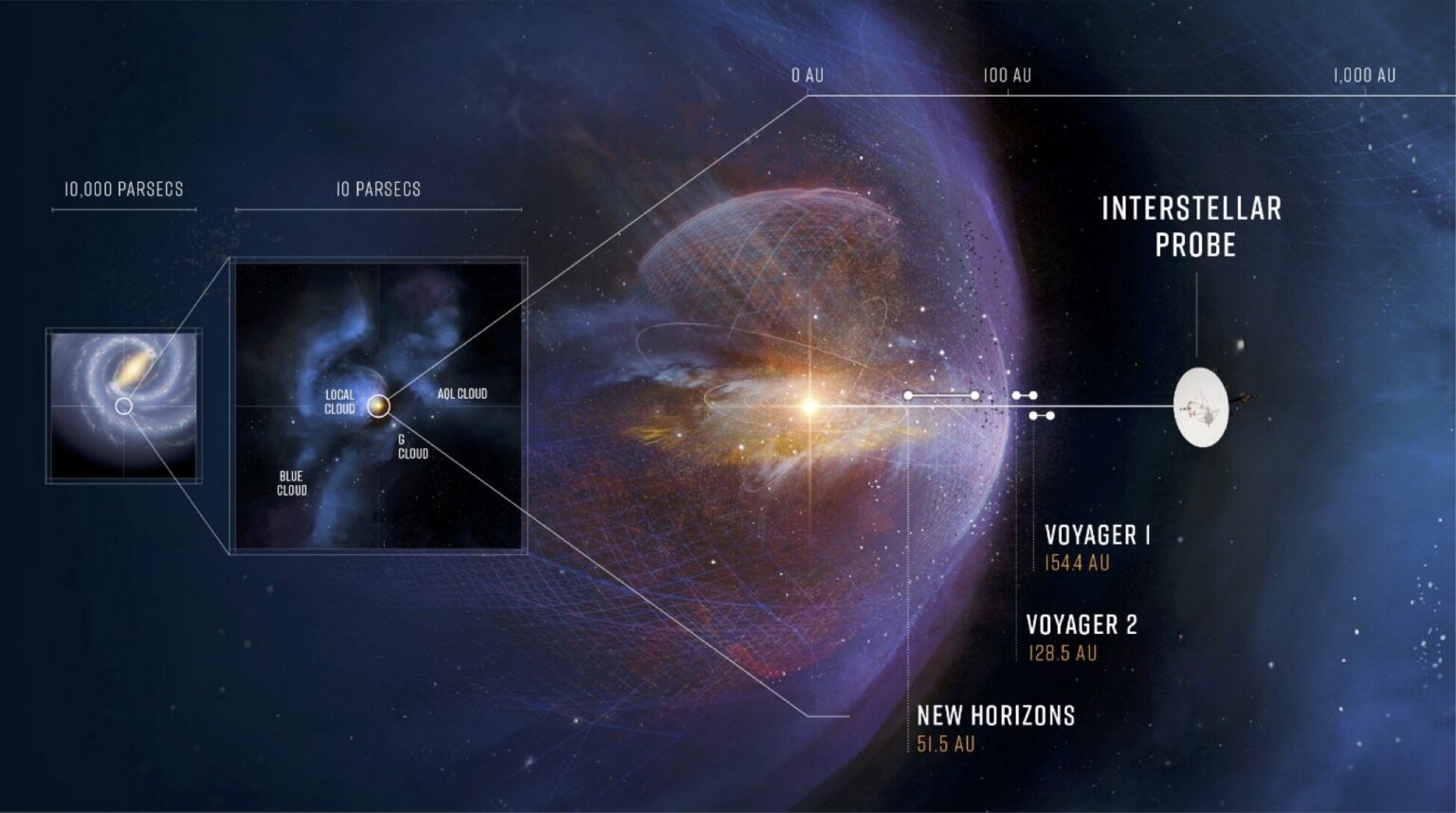Our luminary, during its movement through space, creates a kind of bubble — the heliosphere. It is actually not quite spherical, as scientists do not know exactly how the interaction with interstellar gas occurs. However, in a new study, they have found better trajectories for a probe that can figure this out.

What shape does the heliosphere have?
Scientists from the University of Michigan have published in the journal Frontiers in Astronomy and Space Sciences a study of which spacecraft trajectories will be the best for exploring the heliosphere. This word refers to the area around the Sun, where high-energy particles generated by our luminary dominate.
In fact, the heliosphere is not a perfect ball at all. This follows at least from the fact that our Sun is moving around the center of the Galaxy. This means that our planetary system has “main” and “tail” directions. However, scientists are not even sure what this area of space actually looks like.
The fact is that the Solar System is surrounded by rarefied interstellar gas, which has its own pressure. High-energy particles of the solar wind interact with it, but scientists do not know exactly how. It has not yet been possible to determine the exact shape and size of the heliosphere.
Trajectories of interstellar probes
The situation could be corrected by research carried out by probes that leave the Solar System and head into deep space. However, so far only two Voyager 1 and Voyager 2 spacecraft have crossed the heliosphere boundary. And their research has not yet given a definitive answer as to what it looks like.
Scientists compare humanity to goldfish, who are trying to understand an aquarium while inside it. And this is not an empty curiosity. If astronauts ever embark on an interstellar journey, they will encounter deadly interstellar radiation.
In the meantime, scientists continue to argue about which direction it is worth sending an interstellar probe in order to collect as much information about the heliosphere as possible. In 2021, they already held a conference at which they considered the best trajectories for such a spacecraft.
Then they came to the conclusion that the best way was at an angle of 45 degrees from the “nose of the heliotail”. However, a new study indicates that this is not the case. Scientists analyzed six different trajectories from those that were directed in the “noseward” direction to the “tailward” ones, and it was the latter that seemed to them the best way to direct the spacecraft along them.
According to phys.org
Follow us on Twitter to get the most interesting space news in time
https://twitter.com/ust_magazine


